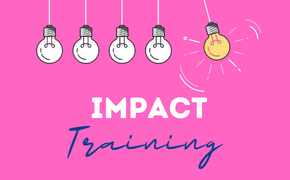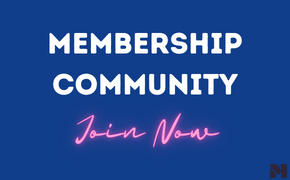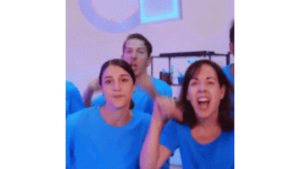Change has changed, and so must we
Even if we weren’t in the midst of the biggest disruption in a generation, research tells us that change has changed. Once the ‘critical’ change settles down, we’ll be facing inevitable organisational, social and economic change.
I can’t advise on social and economic change, but I do know my way around People Change and whilst we’re in the midst of dealing with the NOW, as leaders we need to keep one eye firmly on the NEXT.
Because what will happen next (and what is already happening) is a spate of organisation change.
The average org change happens every 18mths and yet the average ROI on an org change takes 2.5yrs to realise.

If you’re good at maths, you’ll have already spotted a problem with this.
And even if you aren’t good at maths, you already know that change FEELS different these days – and that’s because it is.
Disruption – continuous, ambiguous and unexpected – is a type of change that we haven’t yet got a clean way to describe. But it’s a very different type of change – so just calling it ‘change’ is a bit misleading.
- On a personal level, this new style of change is exhausting. Change fatigue – which used to be sneered at – is now an accepted fact.
- As a leader, our training to lead ‘through’ change is somewhat redundant. Because what’s on the other side? Oh yes – more change. And the volume, complexity, and interconnectedness of this type of change make it impossible for one leader to have the answers any more (no matter how senior they are). No wonder Gartner’s recent survey shows that only 50% of leaders feel confident to lead in this new state.
- And as an HR practitioner? We’re feeling vulnerable and daunted by the business leaning on us to be transformative, but our toolkit only seems to work on certain types of change – and not always on this disruptive, transformative type.

What is happening?
The very nature of change has changed, but our mindset – and therefore how we react – hasn’t yet caught up.
When we did restructures every 5 years in line with our 5-year strategy, we could handle the change.
When this became more like a 3-year change cycle, we could still handle the change. It was easier because it was:
- A change or THE change (singular)
- A finite process (it had an end date)
- Easier to ‘get through it’ (temporarily tolerable). We could use language like ‘when it’s over’ and be correct – it would be over.
But this type of change is not a singular, finite process, nor does it have an end date. Now, it’s an endless, lumpy lifestyle of overlapping, interconnected, opposing, complex and relentless change(s) – and sometimes, it doesn’t feel tolerable – temporary or otherwise!

We’re not ready for this kind of change (yet), and here is why that matters:
At the individual level, we haven’t yet adapted our coping mechanisms to handle the pace of new change. Resilience is under pressure, confidence and optimism are low and anxiety on the rise. When we’re feeling like this, our marvelous brains don’t work as well as they should which impacts our performance, increasing our anxiety. A spiral.
Our willingness and capacity to handle change diminish, and we move straight from change fatigue into change resistance. And according to Gartner, change resistance makes implementation x25 times harder. Yes, x25! Isn’t implementing change hard enough already?
So how should we, as the people change experts, start doing business differently?
Design: Shift from designed BECAUSE OF change to being designed FOR change. Think of your organisation’s needs as fluid, ever-changing and adaptable and design for that – which will change the paradigm from ‘change happens to me every 18mths’ to ‘I’m always changing – I’m adaptable’.
Leadership: Our leaders aren’t well-equipped to lead in new change – they are used to following linear change processes, and today there are too many of these – running at different speeds and crashing into each other – for them to handle. It’s not about ‘managing in change’, or ‘leading through change’ anymore. Investing – especially in our middle-management groups – is critical to connecting the ‘bottom’ and the ‘top’ of the organisation and bring cohesion and clarity to bear – help them make the shift from ‘managing a change process’ to simply leading – in ambiguity and uncertainty.
Communication: Our senior leaders cannot be relied upon to have all the answers anymore, and cannot keep up with the communications burden placed upon them by the new type of change. Research shows that top-down communication results in lower engagement in the change and earlier fatigue from the change. It naturally creates delays while information gaps are plugged – which impacts team agility. It breeds dependency on top-down information that hinders individual resourcefulness. The resourceful employee will fill in their own gaps by asking around, and will better determine a course of action relevant to them and their job – and do so more quickly than standing still, waiting to be told what to do. I’m not saying stop exec comms! But I am saying encourage resourcefulness and initiative at the same time – the era of one leader having all the answers is over.
Problem-solving: Perhaps counter-intuitively (because we are concerned about change fatigue, or because we want to protect our staff) we should engage our staff in the problem and ask for their inclusion in the solution. We need to ask more of them, at a time when it feels like we should trouble them less. Research shows that where line staff are engaged in org design and problem-solving, they can absorb greater breadth of change and a greater volume of change. They will apply more exertion to implementing the change, and handle greater levels of disruption because of the change – because involvement breeds resilience, it does not weaken it.
In addition, Gartner’s research shows that we double the success of redesign when line staff are involved – and improve even further upon that when HR facilitates the conversation.
Adapting to disruption is a change mindset challenge, not a change management challenge.

These levers start to democratise the concept of organisation, of expertise, of power – and that may be why only a few organisations (with great difficulty) have managed to implement a truly new approach to org design. These levers challenge many of us – especially those in HQ and leadership positions. They even challenge us in HR – as we have to learn to let go to move forwards. Truly changing ourselves is not easy. But the alternative is harder.
It’s one thing to say change is the new normal or the one constant is change – but it’s quite another to adapt our habitual mindset, assumptions, and approaches to a permanentlyaltered reality.

· Rebecca is a leadership and talent expert on a mission to help HR transform business.
· She helps HR Leaders and their teams to enhance their impact in uncertain times.
· A key architect of the strategic response to workforce disruption for Australia Post, she brings real-life experience and deep expertise to the table.
Speak to Rebecca about People Change & Workforce disruption | Talent Acquisition & Onboarding | Careers & People Experience













